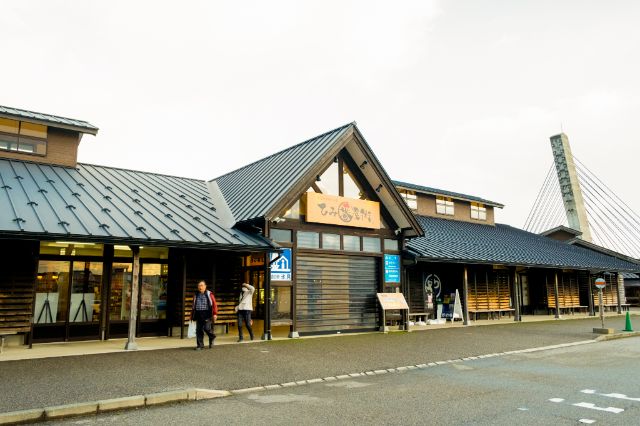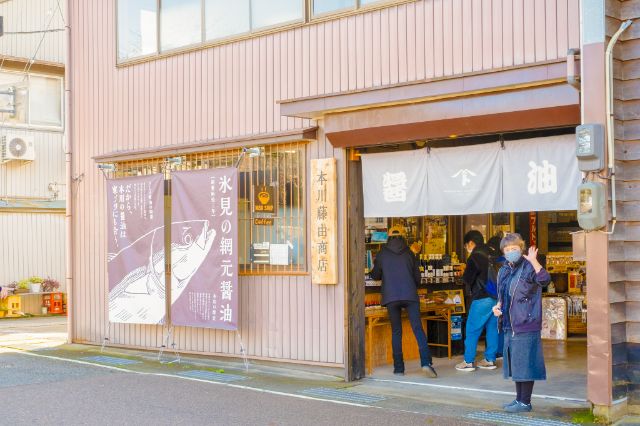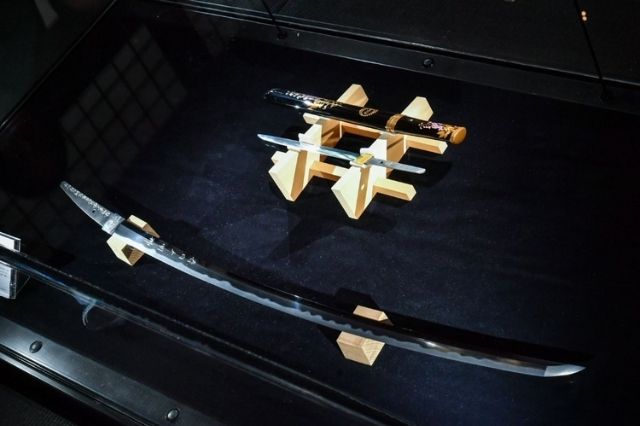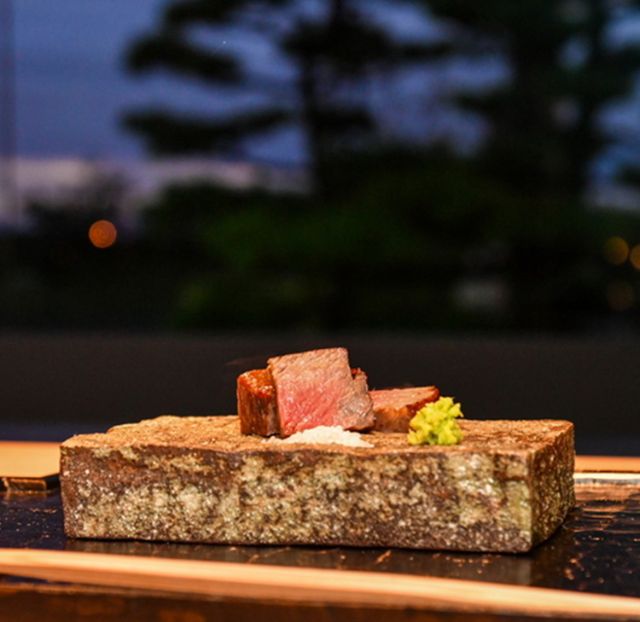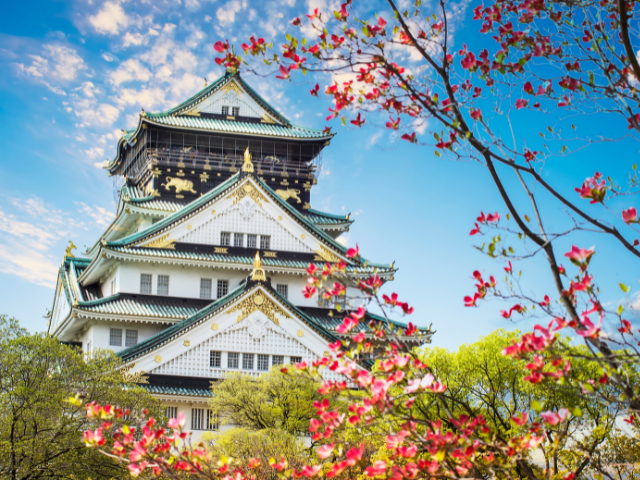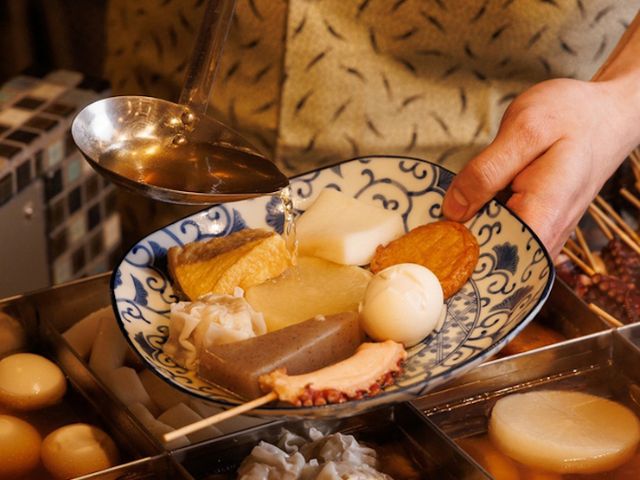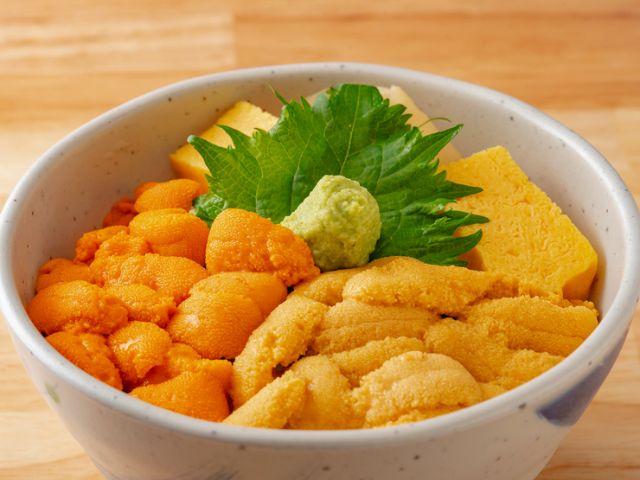Especially illuminated! Experience an evening tea ceremony hosted by the Matsuo school at the beautifully lit Rokkaen | Kuwana, Mie
Update-Date: Feb 18, 2025
Author:
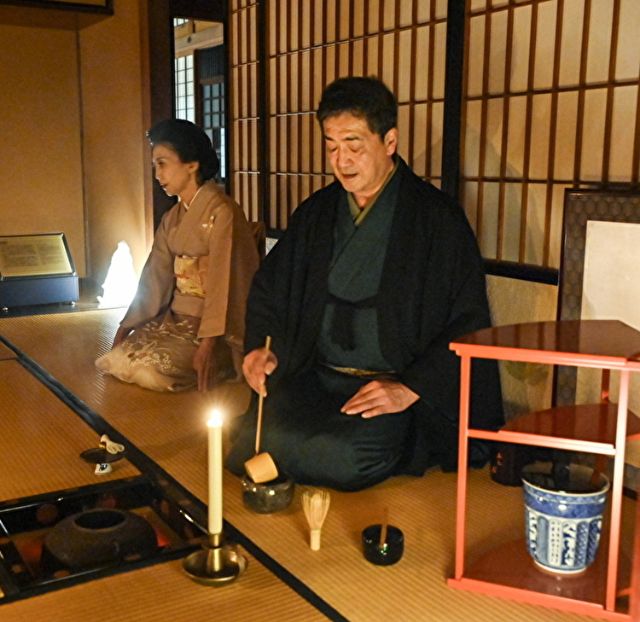
- An Open Kitchen with a Scenic View: Featuring the iconic Ichi no Torii gate as its stunning backdrop, guests will be captivated by its ambience.
- The Chidori Sakazuki Ritual: A symbolic exchange of cups between the host and guests steeped in tradition and meaning.
- Evening Tea Ceremony at the Illuminated Rokkaen: Experience the serene beauty of Rokkaen under the night lights.
- Koicha-seki Session in Ichinoma: Relish the tranquility while enjoying the deep, rich flavors of koicha in a peaceful setting.
- Interlude in the Garden and Thin Tea Session in Ninoma: Take a restful break in the garden before moving to a lighter usucha session, where conversation flows freely.
Authentic tea kaiseki: Created to enhance the enjoyment of tea
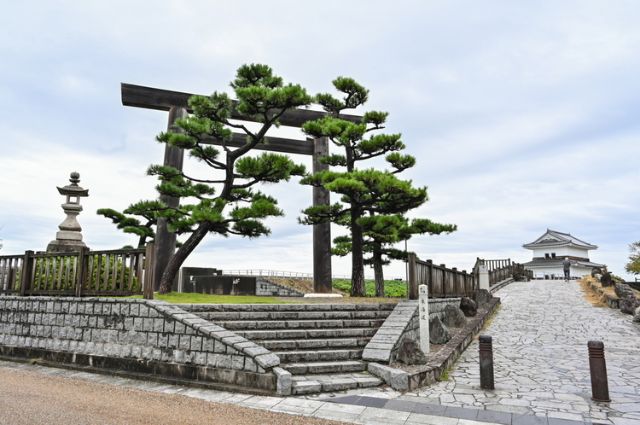
On the day, a slightly early dinner will be served at Kaiseki Ichino starting at 5:00 p.m., timed perfectly to complement the goza (evening tea ceremony) at Rokkaen, which begins at 7:30 p.m. and includes both koicha (thick tea) and usucha (thin tea) sessions.
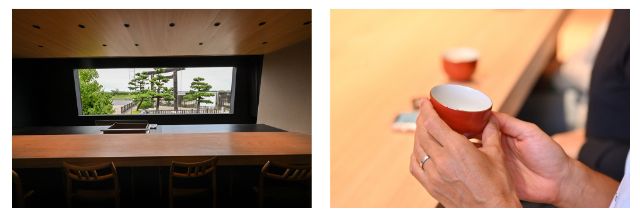
After enjoying this calming drink, guests settle into their seats at the counter, ready to immerse themselves in the experience.
An open kitchen with a captivating view of the iconic Ichi Torii
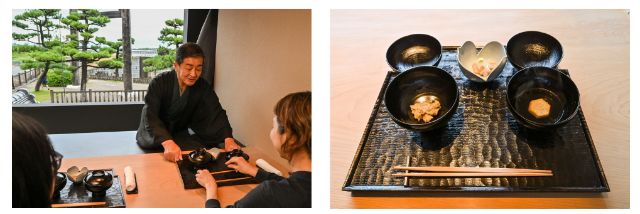

Right: The nimono-wan (simmered dish) features clam-shaped fish paste (shinjyo) with matsutake mushrooms.
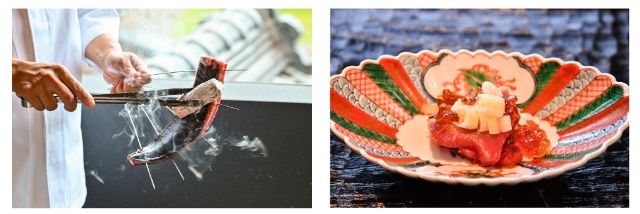
Right: Seared return bonito served with a soy sauce jelly.
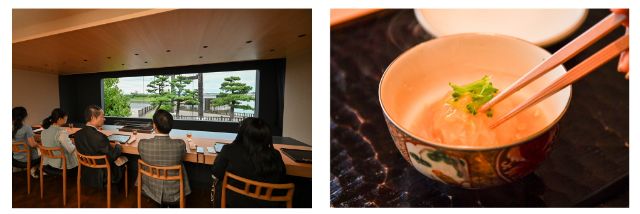
Right: The takiawase (vegetables served with meat, fish or tofu) features chrysanthemum-shaped radish and duck.
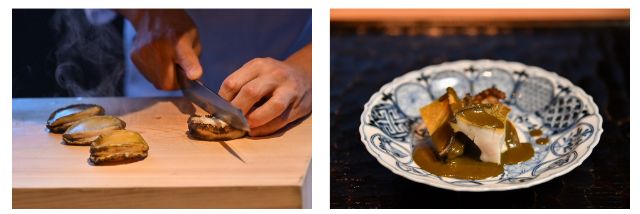
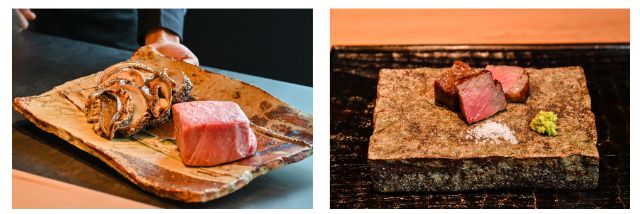
An introduction to chidori sakazuki, where host and guests exchange cups
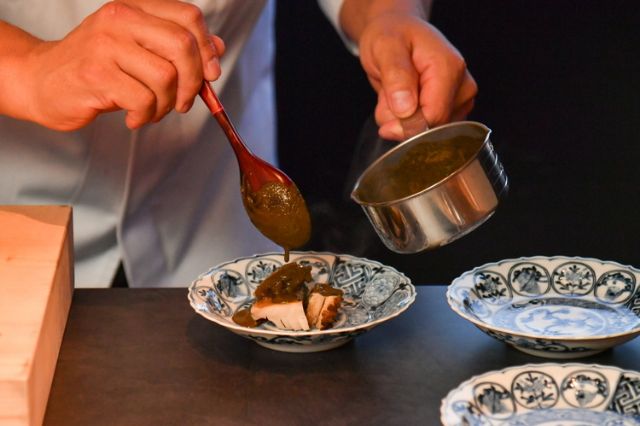
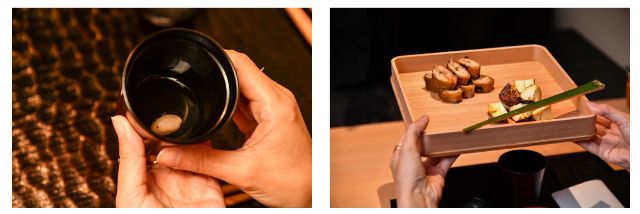
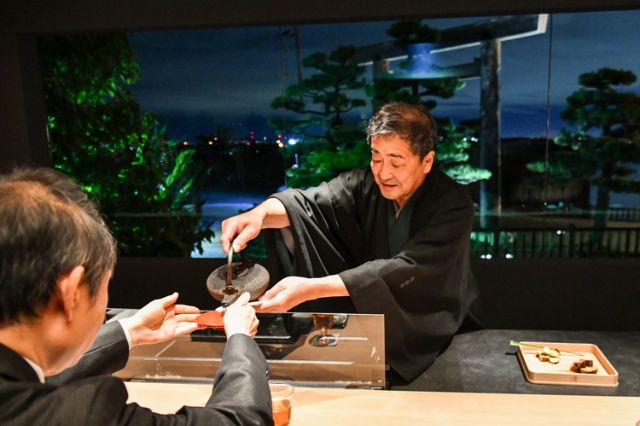
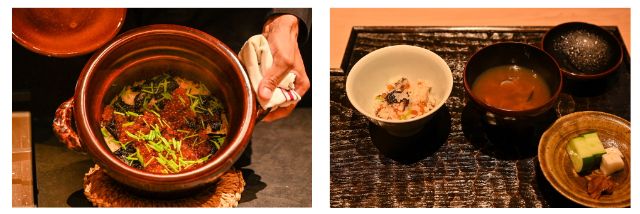
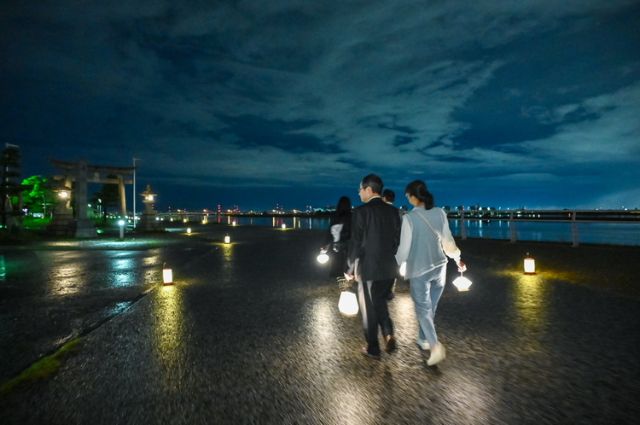
Experience the evening tea ceremony at the illuminated Rokkaen
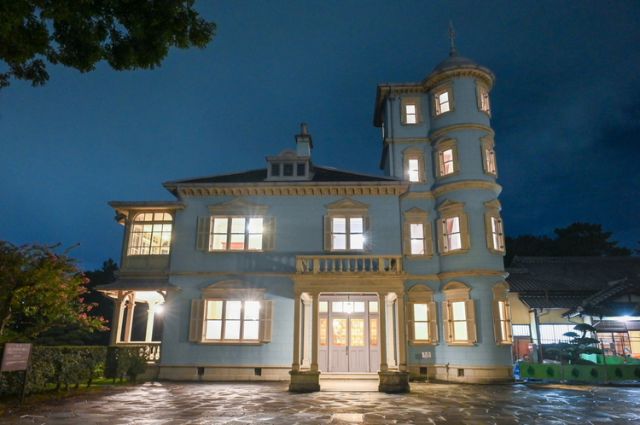
The Western-style building was designed by British architect Josiah Conder, renowned for designing the Rokumeikan, a social venue built in 1883 to entertain state guests and foreign diplomats. With this special illumination, these historic buildings from the Meiji and Taisho periods are bathed in light, creating a fantastic atmosphere.
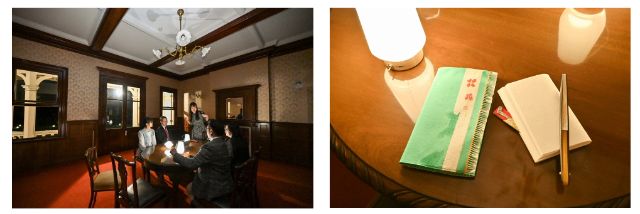
Preparations for the tea ceremony include setting phones to silent, removing accessories such as watches, rings, necklaces, earrings, and piercings to avoid damaging the tea utensils, and tying up long hair. These are all necessary steps for entering the tea ceremony space.
Koicha-seki: Enjoying the tranquility in the ichi no-ma with thick tea
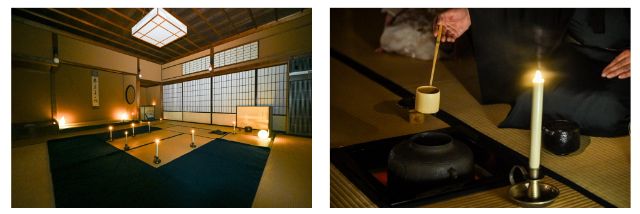
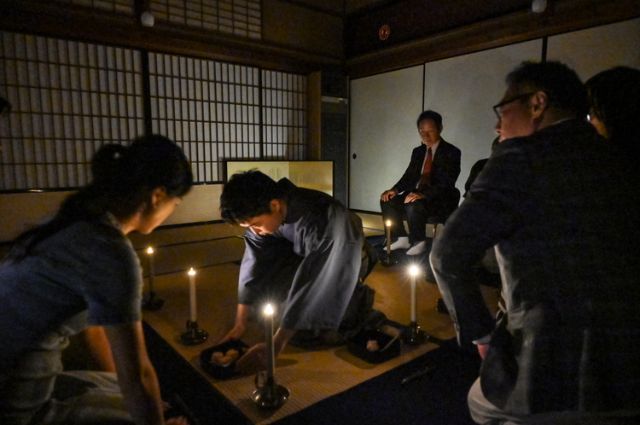
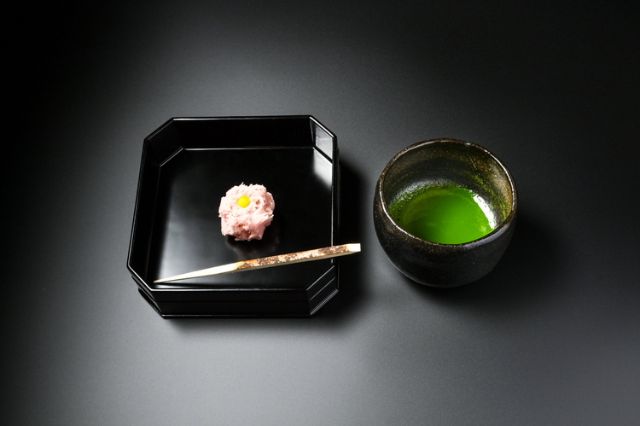
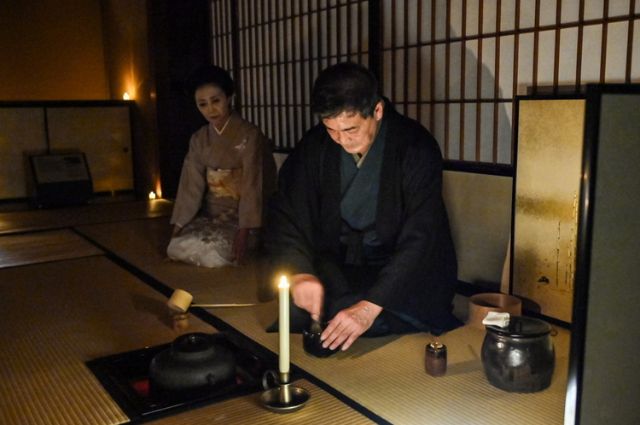
Usucha-seki: Enjoying conversation in the ni no-ma

In contrast to the koicha-seki, the usucha-seki allows for conversation, which creates an easy-going atmosphere. Participants then spend some time conversing with Master Myogensai Soten.
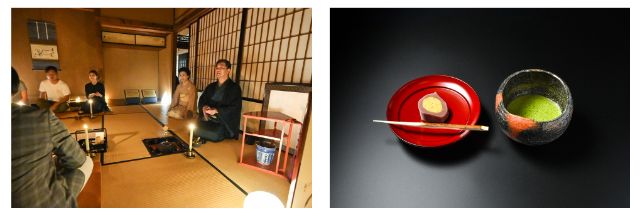
So, what are the basic rules that must be followed when enjoying a tea ceremony?
“For me, tea utensils and tools are very important. As long as you treat them with the same care, there are basically no overly complex rules. Holding tea utensils too high or using them with one hand can cause the host to worry, as they might get dropped. Rings and necklaces can also cause damage by striking the tea bowl. As long as you follow the basic etiquette of not making the host anxious, there should be no issues.”
The host shows consideration for the guests, and likewise, the guests show consideration for the host. In this experience, we were able to catch a glimpse of the world of tea ceremonies, where both parties consider each other.
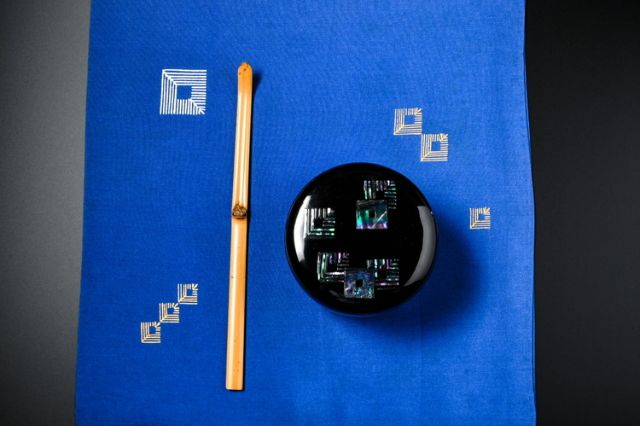
The tone shifts as the ceremony transitions, allowing participants to appreciate the thoughtful spirit and profound atmosphere of a cup of tea, leaving a night that will be deeply etched in memory, accompanied by a sense of spiritual fulfillment.
Click here for more details and booking:
https://www.pelago.com/en/activity/phc039cer-discover-the-beauty-of-kuwana-and-mie-prefecture-on-special-tours-nagoya/
This will take you to the Pelago by Singapore Airlines website.
Photography by Fumihiro Itabashi
Reporting, Text, and Editing by Aki Fujii
Disclaimer: All information is accurate at time of publication.
Thank you for reading our article.
Our goal is to take your culinary journey to the next level by helping you find the best restaurant. With SAVOR JAPAN, you can search and make reservations for
the restaurants found in and around Mie that fill your needs.
Discover more restaurants by area
Keywords
Update-Date: Feb 18, 2025
Author:
Related Articles
New Articles
Categories
Cuisine
- Bars (23)
-
Japanese Cuisine (676)
- Kaiseki (46)
- Nabe (19)
- Okonomiyaki (23)
- Shabu Shabu (37)
- Soba (18)
- Sushi (137)
- Tempura (19)
- Teppanyaki (46)
- Shojin Ryori (3)
- Tonkatsu (11)
- Kushiyaki (10)
- Yakitori (44)
- Sukiyaki (35)
- Japanese Cuisine (342)
- Oyster (2)
- Sashimi/ Seafood (20)
- Unagi (eel) (31)
- Motsu Nabe (offal hotpot) (6)
- Mizutaki (chicken hot pot) (3)
- Oden (8)
- Kaisendon (seafood bowl) (9)
- Udon (2)
- Taverns(Izakaya) Cuisine (123)
- Western Cuisine (42)
- Italian/French Cuisine (95)
- Yakiniku/Steak (224)
- Chinese Cuisine (26)
- Ramen (Noodles) Cuisine (25)
- Cafe/Sweets (60)
- Other Asian Cuisine (5)
- Global/International Cuisine (7)
- Alcohol (45)
- Other (11)
Area
- Shikoku (10)
- Kyoto and Osaka (344)
-
Tokyo (458)
- Tokyo (284)
- Ginza (43)
- Roppongi (22)
- Shibuya (26)
- Shinjuku (46)
- Asakusa (20)
- Ebisu (12)
- Tsukiji (10)
- Tokyo Landmarks (4)
- Ueno (23)
- Akihabara (9)
- Ikebukuro (12)
- Jiyugaoka, Denenchofu, Nakameguro (9)
- Shimokitazawa (4)
- Kichijoji (3)
- Tachikawa (1)
- Omotesando, Harajuku, Aoyama (18)
- Akabane (1)
- Kagurazaka (4)
- Akasaka (10)
- Odaiba (1)
- Tsukishima, Harumi, Toyosu (3)
- Near Tokyo (100)
- Okinawa and Ryukyu Islands (58)
- Hokkaido (124)
- Northern Honshu (Tohoku) (31)
- Central Honshu (Chubu) (144)
- Western Honshu (Chugoku) (32)
- Kyushu (92)
Archives
- December 2025(8)
- November 2025(4)
- October 2025(3)
- September 2025(6)
- August 2025(11)
- July 2025(19)
- June 2025(18)
- May 2025(34)
- April 2025(43)
- March 2025(30)
- February 2025(36)
- January 2025(26)
- December 2024(69)
- November 2024(31)
- October 2024(15)
- September 2024(39)
- August 2024(65)
- July 2024(31)
- June 2024(54)
- May 2024(61)
- April 2024(28)
- March 2024(31)
- February 2024(42)
- January 2024(32)
- December 2023(20)
- November 2023(5)
- October 2023(11)
- September 2023(7)
- August 2023(18)
- July 2023(8)
- June 2023(8)
- May 2023(18)
- April 2023(15)
- March 2023(1)
- January 2023(1)
- April 2022(2)
- March 2022(2)
- February 2022(1)
- January 2022(1)
- July 2021(1)
- March 2021(1)
- February 2021(1)
- December 2020(1)
- October 2020(1)
- September 2020(2)
- August 2020(10)
- July 2020(6)
- June 2020(9)
- May 2020(11)
- April 2020(8)
- March 2020(8)
- February 2020(13)
- January 2020(9)
- December 2019(24)
- November 2019(8)
- August 2019(14)
- July 2019(15)
- June 2019(18)
- May 2019(17)
- April 2019(16)
- March 2019(22)
- February 2019(22)
- January 2019(26)
- December 2018(34)
- November 2018(40)
- October 2018(32)
- September 2018(11)
- August 2018(8)
- July 2018(6)
- June 2018(9)
- May 2018(10)
- April 2018(21)
- March 2018(74)
- February 2018(39)
- January 2018(26)
- December 2017(59)
Keywords
- Omakase
- Accessible
- Affordable
- All-You-Can-Eat
- Amazing Scenery
- anime
- Art
- Autumn
- Awards
- Beer Gardens
- Breakfast
- Chef Recommendations
- Cherry Blossoms
- Chinese
- Close To Station
- Condiments
- Counter
- Coupon
- Crab
- Culture
- Dassai
- Dates
- delivery
- Early Summer
- Editor's Recommendation
- English Available
- Event
- Expo
- Fall Leaves
- Family-Friendly
- Famous Restaurant
- Famous Tourist Spot
- Fast Food
- festival
- fireworks
- Flower Farm
- Free Wi-Fi
- French
- Great Location
- Guide
- Hibachi
- hotpot
- How To
- hydrangea
- Hygiene
- Illumination
- Italian
- Izakaya
- Japanese
- Japanese alcohol
- jingisukan
- Kaiseki
- Kappo
- Kushiage
- Kushikatsu
- Kyoto
- Late-Night
- Lunch
- Manners
- matsusakagyu
- Michelin
- mizutaki
- Model Course
- monjayaki
- motsunabe
- Mt.Fuji
- Multilingual Menus
- Nabe
- Narita Airport
- New Year
- Ninja
- Noodle
- Oden
- Okonomiyaki
- omotenashi
- Onsen
- Osaka
- Osaka Station
- Photogenic Site
- pizza
- PR
- Private Room
- Ramen
- ranking
- Recipe
- Regional Cuisine
- Resort
- Rice Bowl Dish (Donburi)
- sacred places
- Sake
- Sakura
- Sashimi
- sea urchin
- Setouchi Area
- Shabu Shabu
- sightseeing
- Signature Dish
- Soba
- Solo Diners Welcomed
- Spicy Food
- Spring
- Steak
- Summer
- Sunflower
- Sushi
- takeout
- Teppanyaki
- Terrace Seating
- Tokyo
- Tokyo Experiences
- Tokyo Skytree
- Tokyo Tower
- unagi
- UNESCO
- Vegan
- Vegetarian
- Wagyu
- What Popular Gourmet Sites Recommend
- Whisky
- Wine Bar
- Winter
- Wisteria
- Workshop
- World Heritage Site
- World Writers
- Yakiniku
- Yoshoku
- Yuba
- Zen
Discover Restaurants By Area
-

Tokyo Area
Japan's largest city, Tokyo, is the center of culinary culture in Japan. Countless Tokyo restaurants serve every kind of food imaginable and the Toyosu fish market keeps restaurants stocked with the nation's finest fish.
-

Near Tokyo
Coastal areas, mountains and valleys surrounding Tokyo are bursting with tourist destinations, such as hot springs and ski slopes, where many unique foods are only available locally.
-

Kyoto and Osaka Area
The cities of Kyoto and Osaka, together with their surrounding areas, have greatly influenced Japan's culinary culture since the 7th Century. The region is renowned for its entertainment, Kobe beef, and wide-ranging traditional dishes.
-

Hokkaido Area
The island of Hokkaido is home to wide-ranging produce of the finest quality, such as rice, meat, vegetables, fish and fruit. Popular dishes from Hokkaido include robatayaki (food slowly roasted on skewers) and Sapporo miso ramen.
-

Northern Honshu (Tohoku)
The northern end of Japan's main island, Honshu, is renowned for its seasonal fruit and vegetables, nation-leading harvest of fish (especially tuna from Ohma), and delicious beef from Yonezawa, Sendai and Yamagata.
-

Central Honshu (Chubu)
Chubu is in the center of Japan's main island, Honshu, and its culinary culture reflects its position between Japan's western and eastern halves. Delicious Hida beef, world-famous Mount Fuji and many acclaimed sake breweries are in Chubu.
-

Western Honshu (Chugoku)
Chugoku, on the southwest of Japan's main island, is rich with diverse produce. Many of its products are praised as Japan's best, including Matsuba crabs from Tottori and oysters from Hiroshima. Its pears and muscats are also top grade.
-

Shikoku
The mild climate of Shikoku is ideal for growing citrus fruit such as sudachi. Shikoku is also famous for Sanuki udon noodles, huge yields of tiger prawn from Ehime Prefecture and the best torafugu (tiger globefish) in the country.
-

Kyushu
Western culture was first introduced to Japan through Kyushu, Japan's third largest island, where the influence of Portuguese and other western cuisine influenced the creation of a colorful culinary tradition.
-

Okinawa and Ryukyu Islands
Okinawa, Japan’s southernmost prefecture, is a treasure trove of distinctive dishes and drinks that have become popular throughout Japan, including Okinawa soba, unique sushi toppings and Awamori distilled liquor.
![[Osaka Castle, Dotonbori, Tsutenkaku] Enjoy the Sights and Flavors of Osaka in One Day](https://rimage.savorjapan.com/svj/image/discover_oishii_japan/699/article_head.jpg?t=1741677123)
